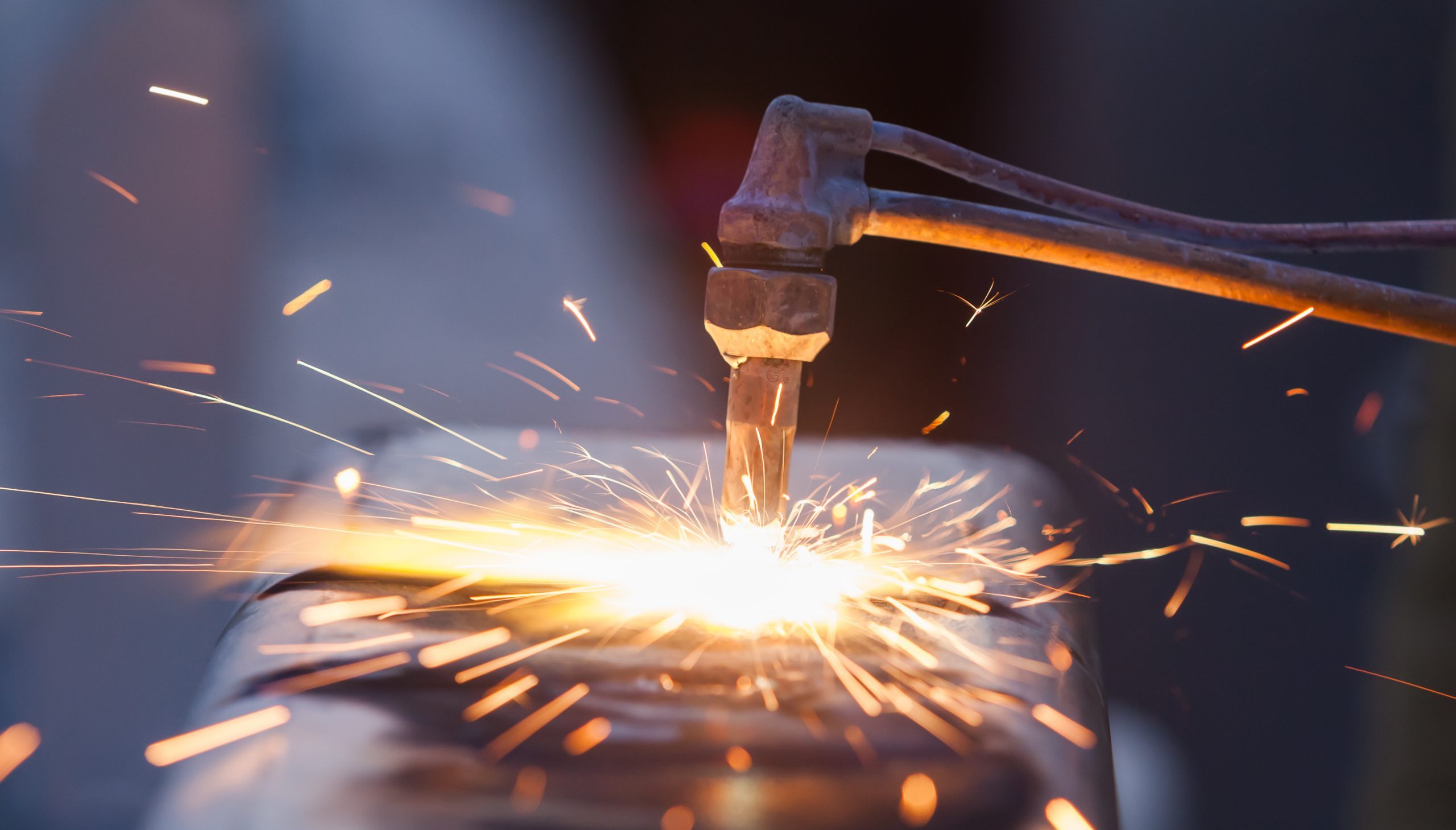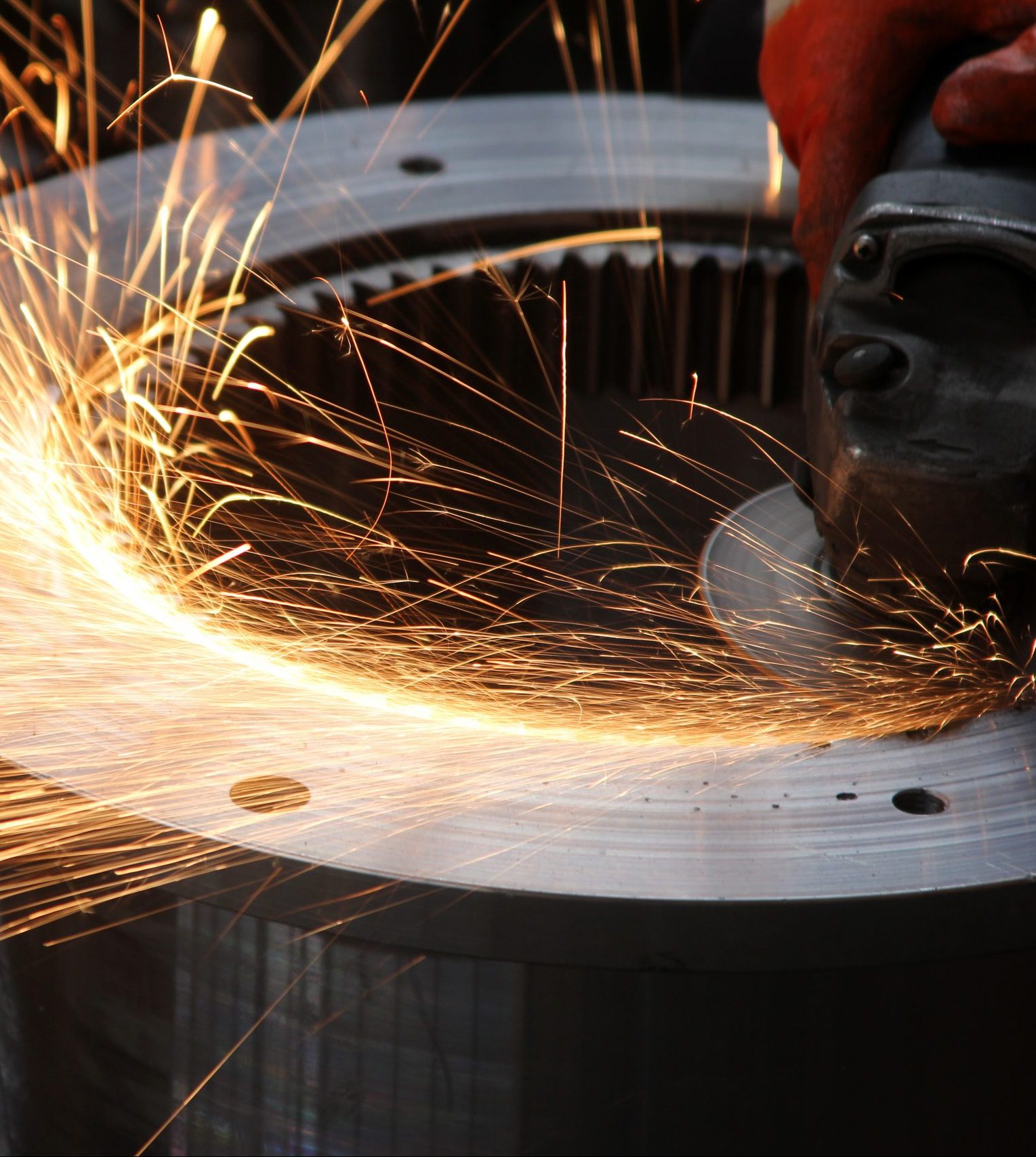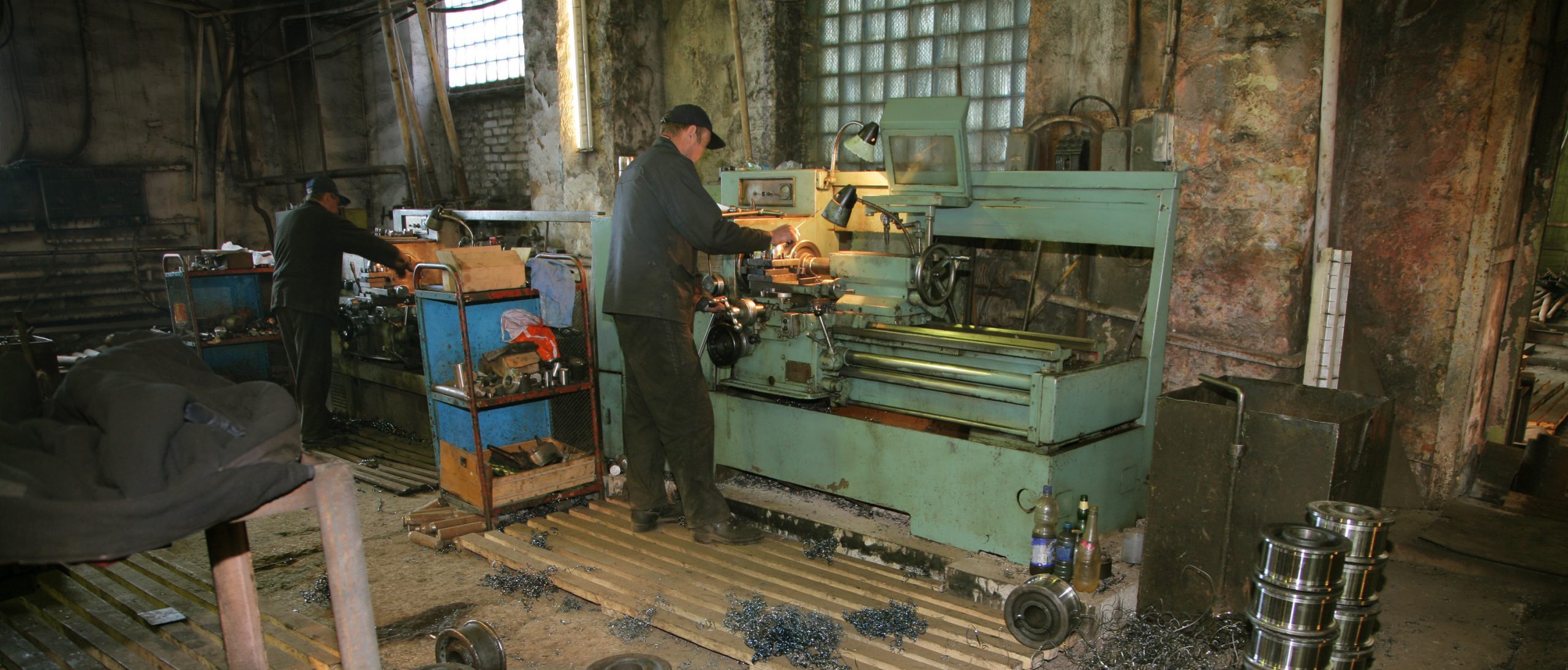Machinists and Mesothelioma
According to the U.S. Bureau of Labor Statistics, close to 500,000 people currently work as machinists and tool-and-die makers.
It was during that era that many machinists and tool-and-die makers were exposed to asbestos.
Asbestos exposure is dangerous because it can produce certain types of cancer. Those cancers are mesothelioma and asbestos lung cancer.
However, asbestos exposure can also cause other types of ailments, such as asbestosis (a condition in which the lungs become scared).
How machinists and tool-and-die makers became exposed to asbestos is no mystery. Prior to the 1980s, asbestos was added to many of the materials and pieces of equipment with which these tradespeople worked. Asbestos was also added to many of the materials used in constructing the very buildings where machinists and tool-and-die makers plied their craft.
In order for a machinist or a tool-and-die maker to develop mesothelioma or one of the other asbestos-related illnesses, it would be necessary for fibers of the dangerous mineral to be inhaled or swallowed.
The possibility of inhalation or ingestion was very real if tiny particles of asbestos were present in the air.
Asbestos could be in the air if the material or piece of equipment in which it was contained were to be cut, shaped, hammered, drilled, or subjected to any number of other forceful actions.
Released from that which contained it, asbestos in particle form would float in the air. Sometimes the number of particles would be many and would appear to the eye as an easily avoided dust cloud. Other times, the particle counts would be low enough to make it difficult if not impossible to see anything lurking in the air, making avoidance less likely.
Once asbestos particles are inhaled or ingested, they make their way into the deepest recesses of the lungs or intestines. They languish there for decades, slowly mutating any cells they can.
Eventually, an asbestos disease erupts. It doesn’t happen in all instances, but it does occur often enough to be a serious concern.
Asbestos diseases like mesothelioma can be treated. Care is expensive, however. That is why many machinists and tool-and-die makers stricken by these illnesses fight back by taking the makers and sellers of asbestos products to court. A favorable verdict or a good settlement can give a plaintiff tradesperson the financial resources required to wage total war against mesothelioma, asbestos lung cancer, asbestosis, or other asbestos-related conditions.

Who qualifies as a machinist?
The Bureau of Labor Statistics indicates that machinists perform tasks that include these:
- Aligning, securing, and adjusting cutting tools and workpieces
- Turning, milling, drilling, shaping, and grinding parts to specification
- Smoothing the surfaces of parts or products
Meanwhile, tool-and-die makers typically perform tasks similar to those undertaken by machinists. The Bureau of Labor Statistics tool-and-die maker tasks specific to this trade include:
- Filing, grinding, and adjusting work product for correct fit
- Smoothing and polishing the surfaces of tools and dies
Among the tools used by machinists and toll-and-die makers are:
- Lathes
- Milling machines
- Laser-based cutting systems
- Waterjet-based cutting systems
- Electrically charged wires-based cutting systems
- Grinders
- Files
- Polishers
Machinists and asbestos exposure from lathes
To machine a part on a lathe, the first step is to position a clamp or collet at each end of the work. Tightening the clamp to secure the work increases the amount of pressure on the surfaces of the part. If the part contains asbestos, the pressure potentially would be sufficient to disturb the mineral’s fibers at the clamp contact points.
When asbestos is disturbed, its fibers are able to break free of the material to which they are bonded. When asbestos fibers break free, they can enter the air—the same air breathed by the machinist operating the lathe.
Much more asbestos is expelled into the air once the lathe begins performing the function for which it was designed—cutting. As the lathe’s blade or burr digs deeper and deeper into the part being machined, it generates a cloud of fine debris. Within this cloud is a combination of metal filings and asbestos fibers. The metal filings quickly fall out of the air, but the asbestos fibers float about for hours and even days before settling to the floor.
Additionally, the centrifugal forces generated by the lathe as it spins tend to whip asbestos fibers outward in all directions. As a consequence, fibers are potentially propelled a considerable distance from the machinist’s work area, meaning that more individuals might become exposed to the asbestos.
Lathes can be a source of asbestos exposure in one other way. Lathes operate on electricity. Electricity is used to power the motor that spins the clamped work. Because electric motors produce intense heat when operated, it was once customary to use asbestos as a heat shield in and around the motor.
Asbestos was used in that manner because of its exceptional insulating properties. In the middle of the 20th Century, asbestos was a cheap, abundant mineral prized for its ability to block heat. It frequently was coated over steam pipes, for example, so that one could touch the outer metal without being burned (that was a tremendous safety advantage in homes heated by steam and occupied by young children).
However, asbestos within electric motors was subject to wear and tear. Over time, the fibers would break free. They might not immediately escape into the air, but they instead would accumulate within the motor housing. At some point, the housing might need to be opened for servicing of the motor. Opening the housing would expose the accumulated asbestos fibers. If the interior of the housing were then to be cleaned by spraying it with a blast of compressed air, the asbestos fibers would be sent flying.
Whether asbestos entered the air from the lathe’s motor or from the work the lathe was utilized to perform, asbestos posed a serious health risk for the machinist and others nearby.
Machinists and asbestos exposure from grinding machines

A piece of equipment intended to accomplish that is the grinder. A grinder is basically a rapidly spinning abrasive wheel brought into direct contact with the ragged or uneven surfaces of the part or piece. The wheel chips off tiny bits of material from the part or piece, leaving behind a uniformly smooth surface.
If those chipped bits of material include asbestos fibers, a health hazard then is created. As with the debris cloud produced by lathing, the debris cloud caused by grinding contaminates the air that the machinist or tool-and-die maker breathes.
Thus, the asbestos risk posed by grinding machines is similar to that of lathes, but with one added source of danger: the abrasive wheel or disc. These sometimes contained asbestos to prevent extreme friction heat from warping the wheel or otherwise causing it to prematurely require replacement. As the wheel wears down from use, its asbestos content is released into the air.
Asbestos circulating in the air can be breathed or swallowed by machinists unaware of the health dangers posed by the free-floating fibers. Those dangers include the risk of mesothelioma, asbestos lung cancer, and other asbestos-related diseases.
Machinists and asbestos exposure from materials they handle
There was no realistic way for machinists and tool-and-die makers to avoid handling materials—unless they were mere observers in a fully automated production process (a highly unlikely possibility in the era between the 1940s and 1980s). Machinists and tool-and-die makers needed to handle materials in order to work on them.
However, just the mere handling of materials containing asbestos can sufficiently disturb the asbestos within to allow some of it to break free and enter the air.
Upon entering the air, free-floating asbestos fibers are capable of being inhaled or ingested. Once inside the body, the particles remain there for many years and, in some cases, trigger devastating changes in the cells surrounding the lungs or intestines. The result can be mesothelioma, asbestos lung cancer, asbestosis, or other asbestos-related conditions.

Machinists and asbestos exposure from the shop
These building materials posed no serious health risk to machinists and tool-and-die makers unless those items were damaged, cut, drilled into, hammered, scraped, sanded, or extracted.
Here are some of the types of asbestos products that machinists and tool-and-die makers might have encountered on the job.
- Bricks
- Plaster
- Cables
- Wires
- Ceiling tiles
- Insulation
- Flooring
- Furnaces
- Generators
- Ducts
- Wall panels
- Drywall
- Pipe coatings
Consider, for example, drywall—a quite common building material. Asbestos was used in drywall systems throughout most of the 20th Century. Asbestos was added to drywall boards, to the tape applied over the joints between adjoining boards, to the compound applied over the tape, and even to the coatings brushed over the entirety of the boards.
Asbestos was added to these materials to make them stronger and lighter in weight. Asbestos also was added to make them resistant to moisture. As well, asbestos was added to drywall systems so that rooms could be warmed with less furnace heat and cooled with less air-conditioning.
The other benefit of adding asbestos was it made drywall systems fire-resistant, if not fireproof (depending on how much asbestos was added).
The asbestos within drywall could be released into the air in any of several ways. One would be if the drywall sustained a gash, as might happen if a workbench or chair were shoved up hard against it. Another way would be if a shelf or other object were to be mounted to the wall by nails or screws (the act of hammering or drilling those fasteners would puncture the wall and allow asbestos fibers to escape).
By whatever means asbestos was released from building materials, it was then that the health hazard arose. Upon coming into contact with airborne asbestos fibers, a machinist or tool-and-die maker might inhale or swallow some. The fibers would penetrate into the lungs (or intestines, if swallowed).
Some machinists and tool-and-die makers might not be adversely affected by the presence of those asbestos particles within their bodies. But others would. For them, what would transpire is this: over the span of one or more decades, the asbestos would initiate subtle changes in the composition of the cells lining the lungs, the heart, or the abdomen. Those changes might then turn healthy cells cancerous.
Machinists’ rights to compensation after asbestos exposure
The compensation potentially available to you would pay in part or full for the costs of receiving medical care. It would also make up in part or full for the income you weren’t able to earn for yourself and your dependents as a result of becoming too ill to work.
To obtain compensation, you would need to take legal action against the company or companies responsible for exposing you to asbestos.
Although some asbestos companies cannot be sued (those that have declared bankruptcy), they are nonetheless obliged under the law to make compensation available through a special claims process.
Whether you sue or seek compensation through the special claims process, you will first need to consult a lawyer or law firm with a practice focus on asbestos injury litigation.

About the author…
Chris T. Layloff was raised in the steel town of Granite City, Illinois. He graduated from Saint Louis University with a dual-degree in finance and economics in 2005, and received his J.D. from Saint Louis University School of Law in 2008.